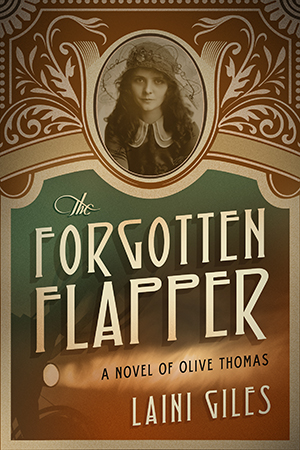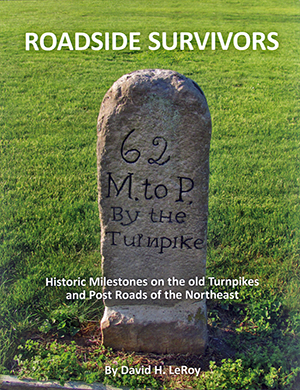 The Forgotten Flapper: A Novel of Olive Thomas
The Forgotten Flapper: A Novel of Olive Thomas
By Laini Giles
Sepia Stories Publishing, 2015
412 pp.
Paperback, $15.99
Laini Giles’ “The Forgotten Flapper: A Novel of Olive Thomas” is a decadent glimpse into the life of one of the first silent film stars from the Pittsburgh area who made it to Hollywood. The book is classified as historical fiction and based on the facts of Olive (Duffy) Thomas’ life, vividly showing readers why the name Olive Thomas should be forgotten no more.
The book’s structure cleverly resembles a silent movie itself with pages depicting film reels that act as scene breaks. These breaks include “Overture,” “Act One,” “Intermission,” “Act Two,” “Reprise,” and “Finale.” The Overture is begun in Olive’s imagined voice telling her life story as a sassy ghost trapped inside the walls of New York City’s New Amsterdam Theater, a place where she had the best time in her life performing in the Ziegfeld Follies. The manner of speech given to Olive here is slightly distracting as it feels more like someone today would imagine that a flapper would speak rather than authentic speech; for example, her favorite expression, “hell’s bells,” is repeated much too often. On the positive side, this tone does capture the reader’s attention and creates an impression of the early 1900s, but its use fades as the story progresses.
The book has many short chapters that begin with the location and date to set the scene, which is immensely helpful for reader and likely for the author too in creating a timeline of Olive’s life. In Act One, her story begins in Charleroi, Pa., then moves to McKees Rocks as she and her family did after her father’s death. She grew up in some of the most smoky, industrial areas where poverty was the norm and women did not have many career options. Olive dreams of getting out of the Pittsburgh area and envisions a much grander life for herself that did not involve settling down with her first husband, Bernard Krug Thomas, whom she marries at age 16. She is willing to do anything to make that dream happen and abruptly files for divorce, moving to Brooklyn, N.Y., to pursue a dancing career and a more exciting, glamorous life.
While living with her Aunt Elsie and working as a shop girl at Klein’s department store, Olive enters and wins “The Most Beautiful Girl in New York” contest that led to her likeness being drawn by artist and illustrator Howard Chandler Christy. His romantic depictions of women called “Christy girls” were often used in magazines and helped to popularize Olive’s image, gaining her a job as a dancer at the Ziegfeld Follies and attracting the attention of film companies. Rising in her career as a dancer in the Follies, Olive does what it takes to get better roles and make more money, including participating in the racier shows put on after hours at the rooftop garden. There is a sense of tragedy to Olive who seems like she always wants more than what she has and will never be satisfied even as she rises as a star on Broadway.
On a trip with friends to San Bernardino, California, in 1916, Olive meets Jack Pickford at a restaurant. The notorious playboy and actor was the brother of Mary Pickford, one of the major stars at the time, and the two soon begin a lavish but stormy relationship and marriage. As she gets more famous at the Follies, Olive is offered more film roles playing schoolgirl characters and begins working for struggling film companies that were in their infancy. Olive certainly develops into a more sympathetic character when she moves to California to pursue acting and you root for her to keep going and make it big. It is quite endearing that she always wants to learn more about her trade by asking questions about filmmaking on set, even daring to ask the head of a film company to allow her to direct a scene in a movie she is working on.
Olive’s story gets a little choppy toward the end as her relationship with Jack deteriorates and it becomes difficult to keep track of which film she is working on after reading about the many she was involved in. Despite that, Giles does a good job of moving the story along as Olive achieves some success as an actress. Ultimately, Olive’s ambition and success are derailed as her relationship with Jack moves toward its inevitable and tragic end.
As you read Olive’s story—even though you know some of the supporting characters and dialogue are fiction—you cannot help but think of what an incredible amount of historical research and work it must have been to piece Olive’s story together and give it such an immersive quality. Laini Giles’ “The Forgotten Flapper: A Novel of Olive Thomas” is a cautionary tale of fame but also an absolute treat for anyone who is interested in early film history or can relate to the struggle of following one’s dreams.
Reviewed by Liz Simpson, Assistant Editor and Assistant Registrar, Heinz History Center
 Roadside Survivors
Roadside Survivors
By David LeRoy
Paperback, 2015
99 pp., 200 color photos
$43.95 at Lulu.com
Fans and historians of milestone markers will adore this comprehensive catalog of the survivors in the northeastern United States. Surprisingly, many have survived two centuries of roadside development, not only urban encroachment but the widening of most every road. Author David LeRoy has spent four decades tracking down 400 mile markers and continues to find them, often hidden by overgrowth or moved nearby for protection from modern traffic and, even worse, snowplows.
The milestones were crafted from real stone and placed at one-mile intervals along roads in the late 1700s and early 1800s to mark the distance between towns. These were surely a welcome sight to those traveling on lonely, dusty (or muddy) roads by horse-drawn wagon or stagecoach. They range from five to six feet long, half of that underground. He organized his finds by the turnpike (early toll road), post-rad (established for mail delivery), or other road such as the Lincoln Highway (whose concrete posts date to 1928).
A brief history is presented for each road, and then each marker is pictured with a color photograph that shows detail and a bit of its setting. The end featured a spreadsheet-style tabulation of the data plus endnotes to the text.
The high list price might keep casual readers away but anyone interested in the history and location of these monuments to road-building history will find great value in the text, color photos, and and detailed listings.
Reviewed by Brian Butko, Director of Publications, Heinz History Center
